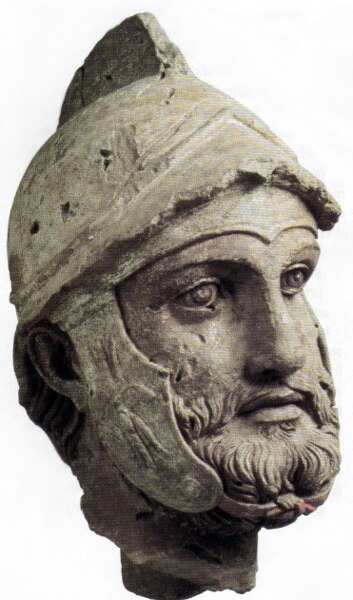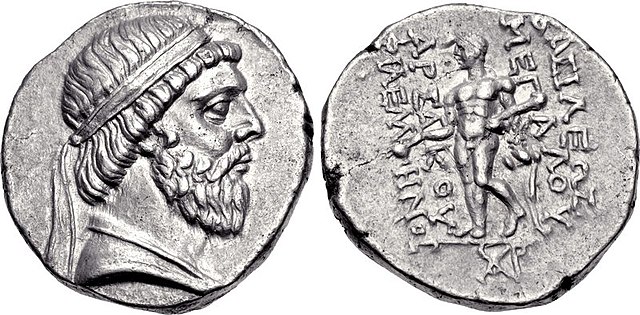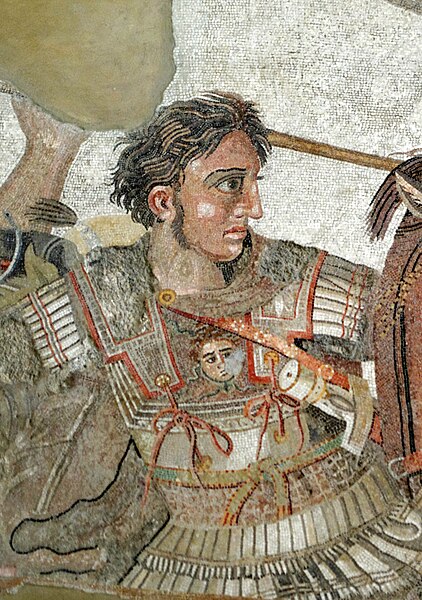Hellenization or Hellenism is the adoption of Greek culture, religion, language, and identity by non-Greeks. In the ancient period, colonisation often led to the Hellenisation of indigenous peoples; in the Hellenistic period, many of the territories which were conquered by Alexander the Great were Hellenised.
One of the mosaics of Delos, Greece with the symbol of the Punic-Phoenician goddess Tanit
Head of a statue of a Parthian wearing a Hellenistic helmet from Nisa. The Parthians adopted both Achaemenid and Hellenistic cultures.
Drachma of Mithridates I, showing him wearing a beard and a royal diadem on his head. Reverse side: Heracles/Verethragna, holding a club in his left hand and a cup in his right hand; Greek inscription reading ΒΑΣΙΛΕΩΣ ΜΕΓΑΛΟΥ ΑΡΣΑΚΟΥ ΦΙΛΕΛΛΗΝΟΣ "of the Great King Arsaces the Philhellene"
Rhyton terminating in the forepart of a wild cat showing Hellenistic influences
In classical antiquity, the Hellenistic period covers the time in Mediterranean history after Classical Greece, between the death of Alexander the Great in 323 BC and the death of Cleopatra VII, followed by the emergence of the Roman Empire, as signified by the Battle of Actium in 31 BC and the conquest of Ptolemaic Egypt the following year. The Ancient Greek word Hellas was gradually recognized as the name for Greece, from which the word Hellenistic was derived. "Hellenistic" is distinguished from "Hellenic" in that the latter refers to Greece itself, while the former encompasses all ancient territories under Greek influence, in particular the East after the conquests of Alexander the Great.
Hellenistic period
The Nike of Samothrace is considered one of the greatest masterpieces of Hellenistic art.
Alexander fighting the Persian king Darius III. From the Alexander Mosaic, Naples National Archaeological Museum.
Alexander's empire at the time of its maximum expansion.








